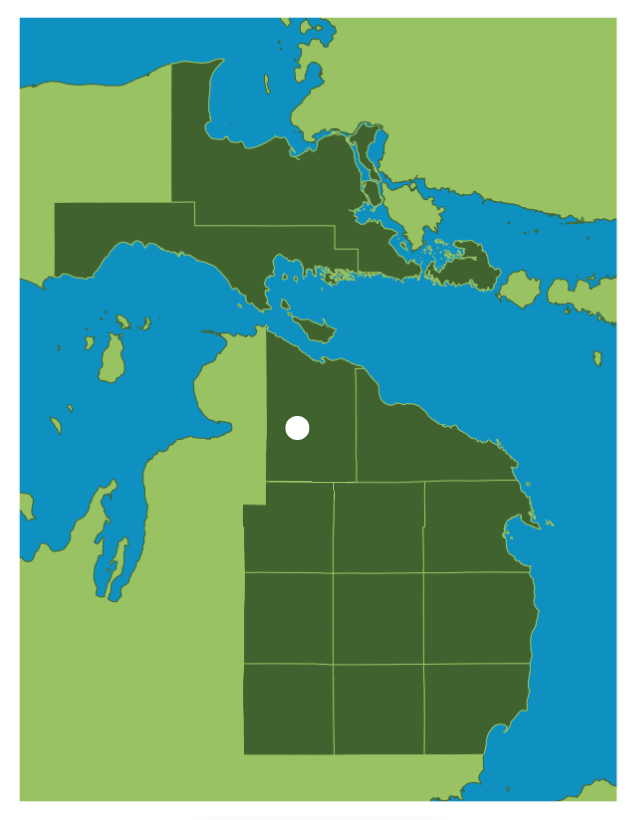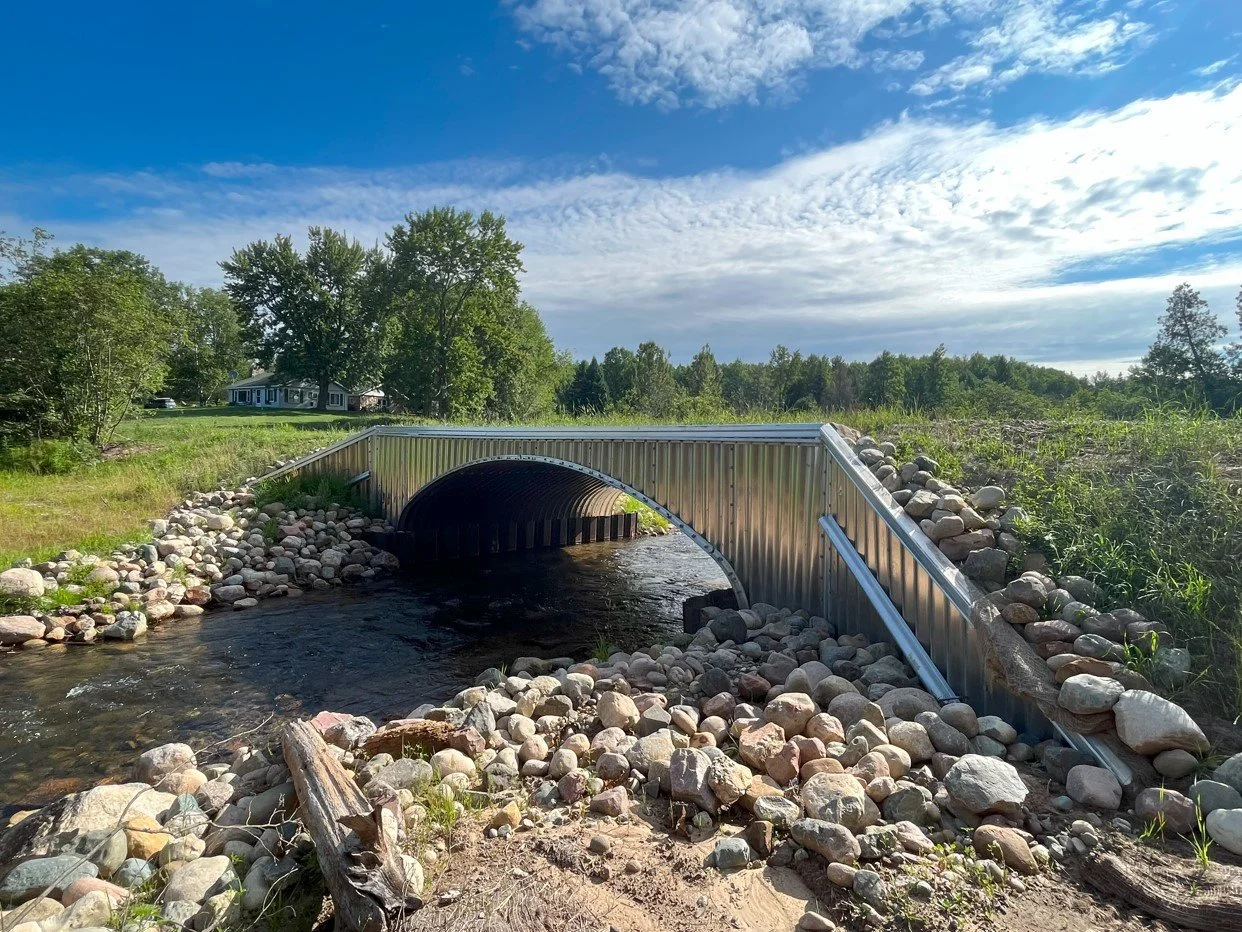Active Project
Welcome to Twin Lakes Creek
Removing Roberts Lake Dam for a Healthier Watershed
“The construction timeline avoids negative impacts to nesting loons in spring and early summer, and to trout spawning downstream in the fall.”- Josh Leisen, Senior Project Manager
Huron Pines, the Michigan Department of Natural Resources Fisheries Division and the Cheboygan County Road commission are pursuing the removal of Roberts Lake Dam near Indian River. Built in 1948 to create a shallow fishing impoundment, the concrete dam now poses more challenges than benefits. The structure frequently clogs with woody debris from beaver activity, threatens road washouts, and suffers from eroding sandy embankments that harm downstream habitat for trout and other river life.
Twin Lakes Creek flows through this area as part of a larger watershed that supports coldwater species downstream. The dam’s removal will restore the natural flow of Twin Lakes Creek, reduce warm water flow to downstream trout habitat and reconnect important upstream habitat that has been cut off for decades.
The Michigan DNR, which owns the Roberts Lake Dam, prioritizes long-term infrastructure planning and responsible dam ownership. A 2020 dam inspection rated Roberts Lake Dam in poor condition, and the DNR Fisheries Division’s 2021 statewide dam assessment identified it as a priority for removal given its condition, maintenance and erosion issues, risk of flooding and risk to the road. Historical maps and documents suggest that a wetland complex should remain after removal of this dam, which was constructed in the late 1940s to raise water levels 2 to 3 feet. The agency secured grant funding from the National Fish & Wildlife Foundation’s America’s Ecosystem Restoration Initiative (formerly the America the Beautiful Challenge) to remove more than a dozen priority dams including the one at Roberts Lake.
As a matter of public safety and long-term infrastructure planning, the dam will be removed in late summer 2026 and a bottomless culvert meeting modern standards for this location will be installed. Roberts Lake will be lowered incrementally. The drawdown of Roberts Lake impoundment will not affect Cochran Lake, located upstream of this location. Documents support the fact that Cochran Lake, a natural lake, existed prior to the construction of Roberts Lake Dam.
The incremental dewatering of Roberts Lake will begin after Aug. 1, 2026 using best management practices to manage sediment and protect downstream habitat, followed by dam removal and the installation of the new aluminum bridge structure.
“The construction timeline avoids negative impacts to nesting loons in spring and early summer and to trout spawning in the Little Sturgeon River downstream of the dam in the fall. It also avoids abrupt changes to water levels during the winter when reptiles and amphibians are dormant,” said Josh Leisen, Huron Pines Senior Project Manager.
The new, 16-foot structure will allow Twin Lakes Creek to flow unobstructed through the crossing and will allow floodwater and woody debris to pass through. Roberts Lake will revert from a reservoir to a stream channel and wetland complex. While this will result in the reduction of the warm-water fishery and boating and paddling recreation at this particular site, it will help protect coldwater species like trout and improve habitat for other aquatic and terrestrial wildlife.
The Cheboygan County Road Commission will assume ownership of the new culvert and Roberts Lake Road will remain open to the public.
This project is made possible through support of partners and funders including the Michigan Department of Natural Resources Fisheries Division and grant funding from the National Fish and Wildlife Foundation’s America’s Ecosystem Restoration Initiative.
Woody debris plugs the inlet of Roberts Lake Dam.
The new structure at Roberts Lake Road will resemble this one installed by Huron Pines in 2023 after removing a private dam on the West Branch Tittabawassee River in Roscommon County.




